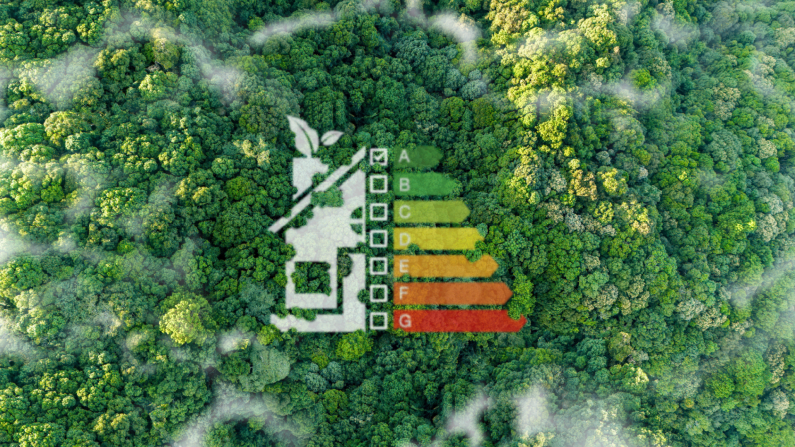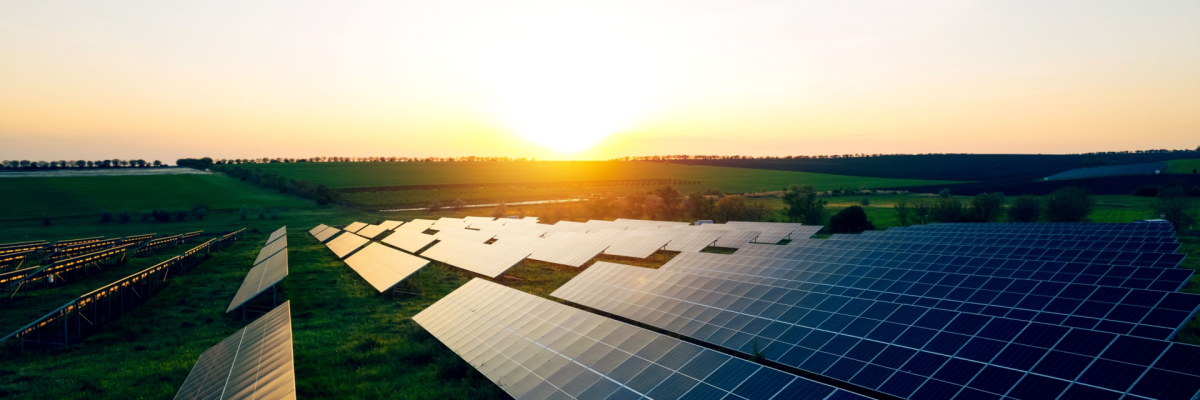We live in an era when addressing climate change and achieving an energy transition is no longer merely an environmental goal but a genuine technological front line — one where “green” technologies are becoming the driving forces of industry, economy, and social transformation. In this article, we explore how new materials and energy sources are helping the planet, what role artificial intelligence plays in this process, and which companies are leading the greentech revolution.
New Materials and Energy Sources: From Hydrogen Batteries to Solar Films

One of the fundamental pillars of the energy transition lies in innovative energy sources and materials that not only replace oil and coal but also bring a new quality to how we produce and store energy.
Hydrogen as the Energy of the Future
“Green” hydrogen is now considered one of the key instruments for decarbonizing heavy sectors — industry, transport, and energy. It is produced from water through electrolysis powered by renewable energy and emits virtually no CO₂. That is its main advantage: when produced cleanly (using renewables), hydrogen generates no carbon emissions. The only byproduct is water vapor — no CO₂, no toxic substances.
This makes hydrogen an ideal candidate for clean energy and heavy industry, where full elimination of emissions has traditionally been difficult — for example, in metallurgy, chemistry, and transport.
Hydrogen can be integrated into almost any energy system:
-
in fuel cells — to generate electricity without combustion;
-
in gas turbines — as part of a mix with natural gas;
-
in transport — from trucks and buses to trains and ships (Toyota, Hyundai, Alstom, and Kawasaki are already producing such solutions);
-
in heating systems — as a replacement for methane;
-
for storage and grid balancing — as a buffer in “power-to-gas-to-power” cycles.
In other words, it is a universal fuel suitable for mobility, industry, and power generation alike.
Technological progress is evident: electrolyzer systems are becoming increasingly efficient, and the use of costly platinum catalysts is being reduced. This means that by 2030, we could see hydrogen widely used — not only in transportation fuels but also in energy storage, chemical production, and steelmaking.
The hydrogen transition also allows countries to reduce dependence on fossil imports and build their own green industries. The EU, Japan, South Korea, Australia, the U.S., and China have all included hydrogen in their long-term climate strategies.
According to the International Energy Agency (IEA):
-
the global hydrogen market could reach ~150 million tons by 2030;
-
infrastructure investments are expected to exceed $700 billion;
-
hydrogen could account for up to 12–18% of global energy consumption by 2050.
This creates millions of jobs, new export markets, and vast infrastructure — from electrolyzers to transport networks.
Solar Films, Flexible Panels, and New Materials
Another critical component of the clean energy shift is solar power and photovoltaic materials. Once associated with heavy silicon panels on rooftops, solar energy is now transforming through new materials that make solar cells thin, flexible, and semi-transparent — they can be applied to façades, integrated into glass, or even printed on rolls like newspapers.
These technologies make it possible to:
-
expand solar energy beyond rooftops and solar farms — into windows, buildings, and even clothing;
-
reduce material and installation costs;
-
increase the share of renewables in areas where traditional panels are impractical.
One of the most promising breakthroughs of the past decade is perovskite solar cells — a special class of crystals with a unique structure that efficiently absorbs light and converts it into electricity.
Their key advantages include:
-
high efficiency — from 3% to over 26% in just ten years (according to the U.S. National Renewable Energy Laboratory, NREL, 2023);
-
lightness and flexibility — thin layers can be applied to plastic or glass;
-
low cost — materials and processes are cheaper than silicon.
Companies like Oxford PV (UK) and Saule Technologies (Poland) are already producing perovskite–silicon hybrid panels with record efficiencies exceeding 29%, and by 2025 they plan to launch industrial production of flexible solar films for façades and windows.
Another innovation is organic photovoltaics (OPV), where current is generated by organic molecules and polymers that can literally be printed on flexible substrates.
OPV advantages include:
-
ultra-lightweight (measured in grams per square meter);
-
flexible and transparent — suitable for architecture, wearables, and gadgets;
-
minimal energy consumption during production;
-
the ability to operate in low-light conditions (indoors or under clouds).
Companies like Heliatek (Germany) and Armor Solar Power Films (France) are already using such films in construction — applied to façades, warehouse roofs, and even cars. The HeliaSol project, for instance, coats buildings with a solar “film” less than a millimeter thick, providing autonomous power for sensors and ventilation systems.
Another growing trend is tandem solar panels, where multiple layers capture different parts of the solar spectrum. Combining silicon and perovskite can yield efficiencies above 30% — once considered science fiction. Transparent solar materials are also turning glass façades and windows into power generators. Researchers at the University of Michigan have created semi-transparent cells that transmit up to 50% of visible light, allowing energy generation without altering building design.
Such technologies are particularly promising for smart cities, where every surface — from skyscraper windows to bus stops — can generate power.
Long-Term Storage and Sustainable Batteries
For renewable energy to become truly mainstream, it needs not only clean generation but also reliable storage. Emerging battery technologies — from sodium-ion and solid-state to flow batteries — are stepping forward to meet this challenge. They help overcome the intermittency of solar and wind energy, making power systems more flexible and resilient.
In combination — hydrogen + new solar materials + energy storage = the architecture of the future energy system. Governments and investors are already aligning toward this vision.
The Role of AI in Optimizing Power Grids and Reducing Emissions

If energy sources are the “fuel of the future,” then artificial intelligence is the “brain” of the new energy infrastructure. It helps make the system smarter, adaptive, and efficient.
Optimizing Grids and Integrating Renewables
One of the biggest challenges is integrating numerous distributed sources — solar, wind, hydrogen — while maintaining stability, reliability, and efficiency. Here, AI plays a key role.
For example, new AI models that combine detailed and simplified simulations have demonstrated their ability to optimize grid performance even amid unpredictable renewable generation. Studies show that AI-based forecasting, storage management, and load distribution can significantly reduce emissions and improve operational performance.
Reports indicate that AI solutions can cut carbon emissions by 30–50% when implemented in energy and industrial systems. In the U.S., Argonne National Laboratory already uses AI to monitor and maintain grid assets, detecting faults before they turn into failures.
Utilities also analyze data from smart meters, weather models, and consumption histories to optimize planning and minimize losses. Research confirms that smart grids powered by AI ensure better renewable integration, predict and prevent outages, and enable automated switching.
Why It Matters
Even with clean energy sources, without intelligent grid management their potential remains untapped. The core challenge lies in synchronizing generation and demand. AI helps reduce reliance on fossil fuel reserves, minimize overloads, prevent losses, and make the system greener.
Furthermore, digitalization allows companies and operators to unlock new business models — demand response, dynamic pricing, and integration of EVs and storage systems — creating an adaptive, data-driven energy ecosystem.
Greentech Startups: Innovation on the Frontline

No technological revolution happens without entrepreneurship. Startups and young companies are often the fastest to commercialize new ideas and scale them into real-world solutions.
Leading Startups
-
Hydrogenious LOHC Technologies (Germany) develops hydrogen transport and storage using liquid organic hydrogen carriers (LOHC), enabling safe, scalable hydrogen logistics.
-
HiiROC (UK) applies thermal plasma electrolysis, reducing energy consumption and eliminating CO₂ during hydrogen production.
-
H2Pro (Israel) focuses on highly efficient, low-cost electrolysis, potentially cutting hydrogen energy costs.
-
Greenlyte Carbon Technologies (Germany) develops direct air capture (DAC) of CO₂, producing hydrogen as a valuable byproduct.
These companies show that greentech is not just about clean energy — it’s also about new materials, hydrogen logistics, carbon capture, flexible energy sources, and supply-chain integration.
For businesses, they exemplify how sustainability can also mean profitability. Investors are taking note: according to recent reports, the greentech market could grow to around $73.9 billion by 2030.
However, there are risks — scaling challenges, high equipment costs, infrastructure adaptation, and dependence on government regulation. Yet it is precisely startups that often act as catalysts for systemic change.
How Digitalization Helps Us Go Green

The transition to sustainable energy is not only about changing fuels but also about digitally transforming industries. Here’s how it works:
Monitoring, Analytics, and Optimization
Digital platforms allow enterprises to track energy consumption, emissions, and equipment performance, forecast loads, and eliminate inefficiencies.
For example, utilities now use AI and cloud-based platforms for smart load and generation management.
Industry Applications: Pressure, Opportunity, Transformation
-
Manufacturing: adopting energy-efficient processes, renewables, and emission reduction — greentech becomes a core operational strategy.
-
Transport: electrification, hydrogen engines, and smart charging reduce carbon footprints.
-
Construction and real estate: integration of flexible solar films, smart building systems, and digital twins reduces energy load and enhances efficiency.
New Business Models
Digitalization enables:
-
virtual energy storage (shared batteries and storage services);
-
demand response through digital incentives;
-
energy tokenization and participation of prosumers (producer-consumers) in distributed grids.
This reduces energy costs, downtime, and emissions while increasing resilience and compliance — and even enhancing corporate reputation. Studies show that enterprises implementing digital and AI-driven energy management systems have cut emissions and costs by dozens of percentage points.
The energy revolution is no longer a vision of the future — it is already here. The combination of new materials and energy sources, artificial intelligence, innovative startups, and digital transformation is shaping a resilient architecture for 2030 and beyond.
Those who treat these changes not as a “green option” but as a strategic advantage will hold the key to sustainable growth.
Share this with your friends!






Be the first to comment
Please log in to comment